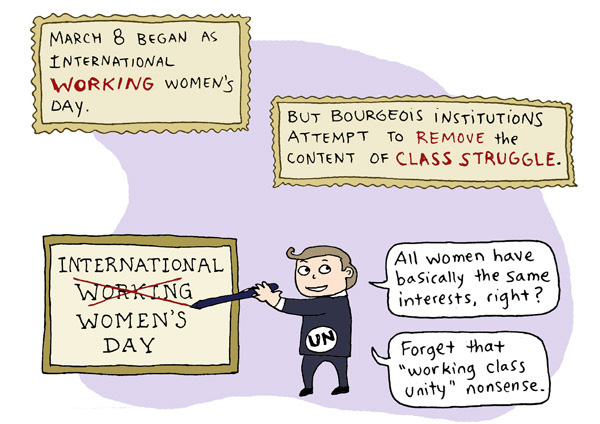International Working Women’s Day: a day of class struggle
by Gerye Proletari
(March 4, 2015)
The bourgeoisie constantly recuperates what belongs to the people. International Women’s Day emerged from class struggle, but various states and imperialist organizations want to turn it into a mere holiday. According to the UN:
“International Women’s Day is celebrated in many countries around the world. It is a day when women are recognized for their achievements without regard to divisions, whether national, ethnic, linguistic, cultural, economic or political.”
Capitalism attempts to wash the historical context and class significance right out. But International Women’s Day is also (more appropriately) known around the world as International Working Women’s Day.
 A Brief Historical Perspective:
A Brief Historical Perspective:
IWWD emerged from the proletarian struggle in the late 19th and early 20th centuries. On March 8, 1857, women workers from textile and garment factories organized a strike in New York City for better pay, better conditions and basic bourgeois-democratic rights (rights such as wage increases, gender quality, and any rights you would expect in a bourgeois-democracy which can be attained without fundamentally questioning capital). On March 8, 1908, women workers of the needle trades went on strike in honor of the 1857 strike—still struggling for basic rights and the ending of child labor and bettering their horrific working conditions. On November 22, 1909, Clara Limlich, a Ukrainian-born proletarian militant, led 20,000 garment workers on strike in New York City against their horrible conditions and terrible wages. On March 25, 1911, the Triangle Shirtwaist Factory, where women workers had been organizing, caught (or was set) on fire. The owners of the factory (which like most, was a sweatshop) locked the fire exit and got away with the murder of over 140 workers! In 1910, at the Second International, Clara Zetkin, a German born proletarian militant, suggested that March 8th be the day designated for the working women of the world.
